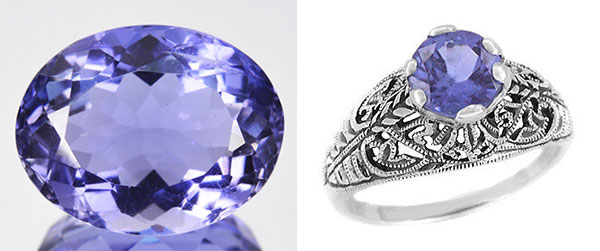Iolite gemstone
Home ➤ Encyclopedia of gems ➤ Iolite gemstonePhysical properties of iolite
| Hardness: | 7-7.5 out of 10 on the Mohs scale |
| Luster: | glass |
| Transparency: | transparent, translucent |
| Color: | light blue, blue, dark blue, purple |
Characteristics of iolite
Iolite (violet stone, water sapphire, lynx sapphire, false sapphire, blue jade) is a very remarkable gemstone. Its name is derived from the Greek words "violet" ("ion") and "stone" ("lithos"), and iolites do have a characteristic "violet color".

Iolite is actually a variety of the mineral cordierite. But colorless stones are usually called cordierites, and those that have a blue and purple color got their own separate name - iolite.
Iolite is similar to sapphire, so iolites are often used as an imitation of sapphire (hence the other names of iolites - "water sapphire", "lynx sapphire" or "false sapphire"). Also, iolite is similar to beryl (only beryl is stronger). And some translucent stones resemble nephrite (for which they received another name - "blue nephrite").
Iolite has one amazing feature, which is scientifically called "pleochroism". This means that if you look at faceted iolite from different angles, the stone will change color. That is why iolites are most often cut in a special way.
Iolites with the effect of "cat's eye" are also found.
How much does iolite cost
Large iolites (over 10 carats) of high quality are valued at $250 per carat, but they are hard to find on sale. Pure iolites ranging in size from 2 to 8 carats will cost $40-60 per carat. The usual price for iolites with defects (these are the most common) are estimated at $5 to $15 per carat.
| ★ Smoky quartz (rauchtopaz) gemstone | |
| See also: | ★ Verdelite gemstone |
| ★ Kunzite gemstone |





